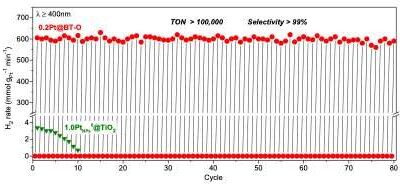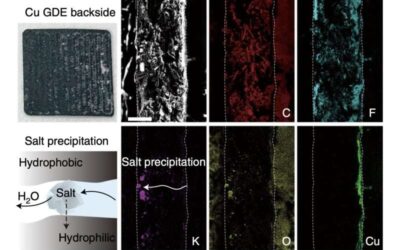Ammonia (NH3), the chemical compound made of nitrogen and hydrogen, currently has many valuable uses, for instance serving as a crop fertilizer, purifying agent, and refrigerant gas. In recent years, scientists have been exploring its potential as an energy carrier,...
Chemistry
A strategy to fine-tune the properties of Lewis bases for electrochemical carbon dioxide capture
In recent years, many engineers and material scientists have been trying to develop sustainable energy solutions that could help to mitigate climate change on Earth. This includes carbon capture technologies, which are specifically designed to capture or absorb carbon...
A new method to dehydrogenate alkanes at ambient conditions
The chemical term alkanes, or paraffins, refers to organic compounds that consist of single-bonded carbon and hydrogen atoms, such as methane, ethane, and propane, and several other hydrocarbons. Over the years, alkanes have become widely used in organic chemistry,...
Using bifunctional ionomers as electrolytes to synthesize ethylene from carbon dioxide
Over the past century or so, human activities have led to the rapid deterioration of the environment on Earth, with detrimental effects such as climate change and a rise in atmospheric CO2. Many scientists worldwide have thus been trying to devise new technologies and...
A new strategy for the electrochemical reduction of nitrate to ammonia
Ammonia (NH3) is a colorless, gaseous and water-soluble compound used in several sectors, including agriculture, the energy sector, and a variety of industries. For over a century, the main way of producing large quantities of ammonia has been via the Haber-Bosch...
A new electrolyte design that could enhance the performance of Li-ion batteries
Most existing lithium-ion batteries (LIBs) integrate graphite anodes, which have a capacity of approximately 350 milliamp hours (mAh) per gram. The capacity of silicon anodes is almost 10 times higher than that of their graphite counterparts (around 2,800 mAh per...
A new material to print mechanically robust and shape-shifting structures
In recent years, 3-D printing has opened up interesting new possibilities for the large-scale production of electronic components, as well as of a variety of other objects. To this end, research teams worldwide have been trying to create materials and structures that...
A window for trap-free charge transport in organic semiconductors
Organic semiconductors, a class of carbon-based materials with optical and electronic properties, are now commonly used to fabricate a variety of devices, including solar cells, light-emitting diodes and field-effect transistors. These semiconducting materials can...
Researchers develop 3-D microstructures that respond to temperature and light
A team of researchers at Karlsruhe Institute of Technology (KIT) and Heidelberg University have recently introduced functional 3-D hetero-microstructures based on Poly (N-isopropylacrylamide) (pNIPAM) a polymer that responds to changes in temperature close to its...








